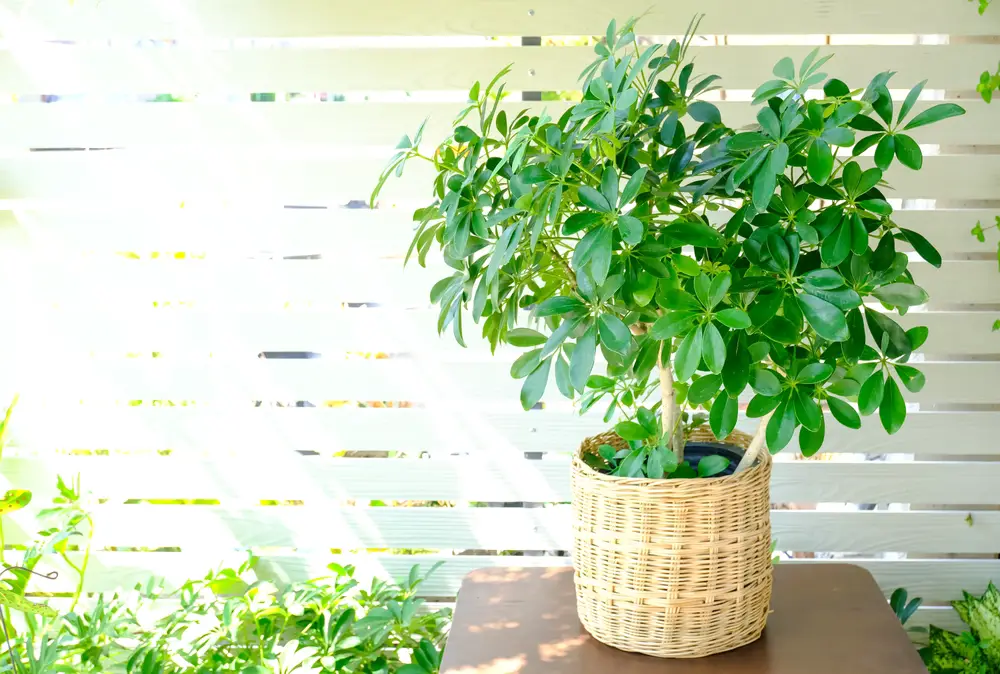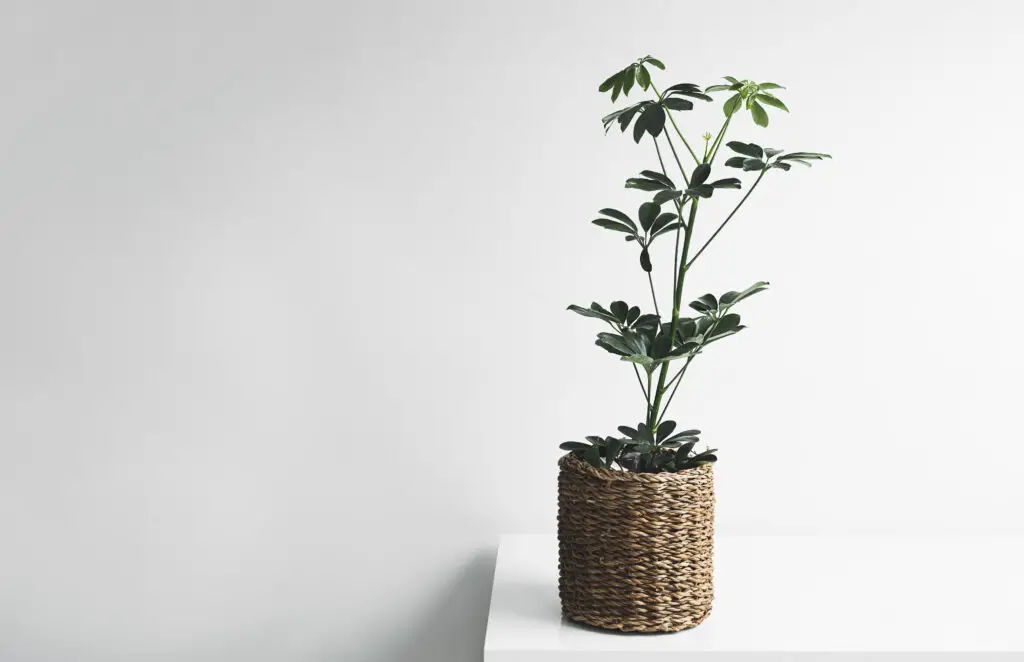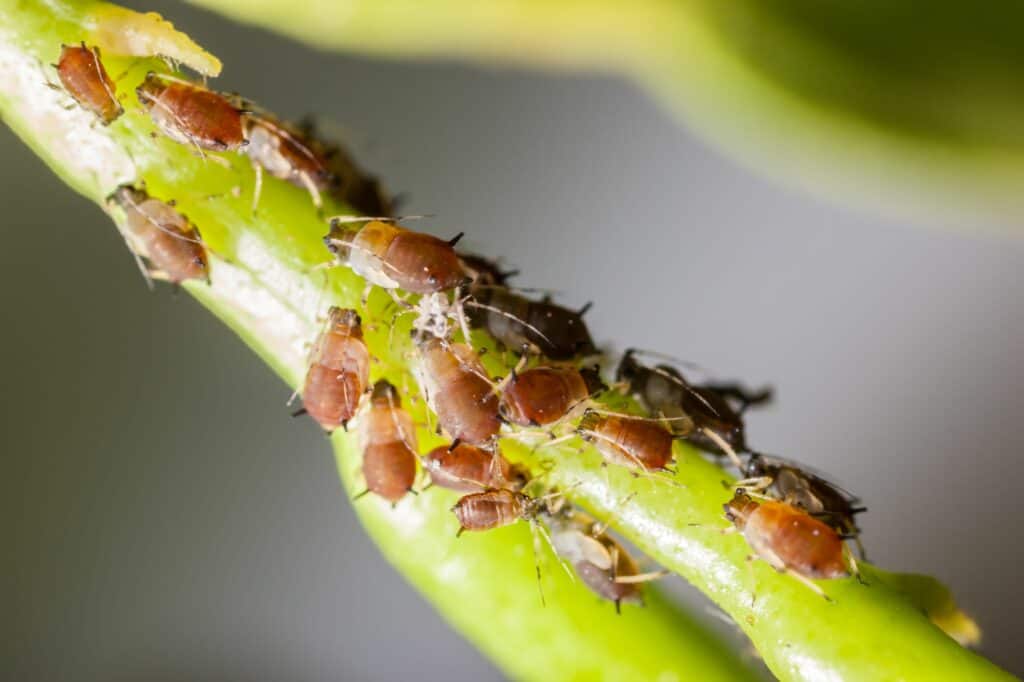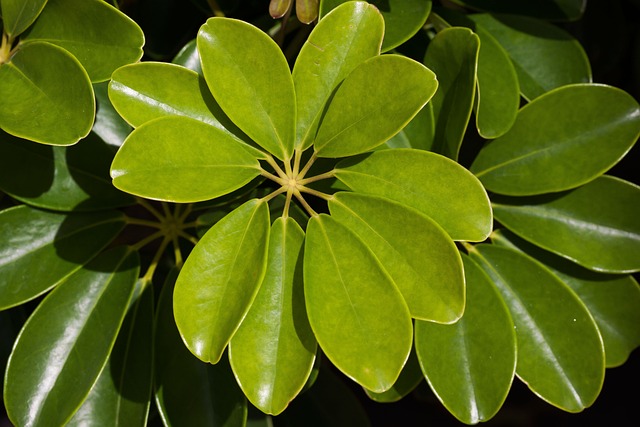Schefflera is a popular houseplant that can add a touch of greenery to any home. However, if you notice your Schefflera leaves turning brown, it can be a cause for concern. Brown leaves on Schefflera can be an indication of a range of problems, from overwatering to pests and diseases.
Understanding Schefflera is key to identifying the causes of brown leaves. Schefflera is a tropical plant that prefers a bright, indirect light and well-draining soil. Overwatering, underwatering, and exposure to extreme temperatures or direct sunlight can all cause Schefflera leaves to turn brown.
Additionally, pests and diseases can also contribute to the problem. By understanding the needs of your Schefflera plant, you can take steps to prevent and treat brown leaves.
Key Takeaways
- Schefflera leaves turning brown can be a sign of a range of problems, from overwatering to pests and diseases.
- Understanding the needs of your Schefflera plant is key to preventing and treating brown leaves.
- By providing the right environmental conditions and monitoring for pests and diseases, you can keep your Schefflera plant healthy and green.
Also don’t miss:
- Why Is My Umbrella Plant Turning Brown?
- Why Is My Tradescantia Turning Brown?
- Why Is My Tradescantia Nanouk Turning Brown?
Understanding Schefflera

Schefflera, also known as the umbrella plant, is a popular indoor plant that is easy to care for and can grow up to 8 feet tall. Schefflera plants are known for their large, glossy leaves that resemble an umbrella, hence the name.
These hardy plants are native to Taiwan and Hainan, China, and are commonly grown as houseplants in many parts of the world.
Schefflera plants are known for their ability to purify the air by removing harmful toxins like formaldehyde, benzene, and trichloroethylene. They are also known for their adaptability to different lighting conditions, making them an ideal plant for both bright and low light environments.
One of the most common issues with Schefflera plants is the browning of their leaves. While it is normal for Schefflera leaves to turn brown at the end of their life cycle, it can also be a sign of a problem with the plant’s care.
There are several reasons why Schefflera leaves may turn brown, including overwatering, underwatering, low humidity, extreme temperatures, chemical sensitivity, and infestation of pests and diseases. It is important to identify the root cause of the problem to prevent it from recurring in the future.
Schefflera Leaves Turning Brown – 6 Common Problems
Schefflera leaves turning brown can be a sign of various issues. Here are some of the common causes:
1. Overwatering
Overwatering is one of the most common causes of schefflera leaves turning brown. When the plant is overwatered, the roots become waterlogged, and the plant cannot absorb nutrients properly.
This leads to root rot, which can cause the leaves to turn brown and fall off. To prevent overwatering, wait until the top inch of soil is dry before watering the plant.
2. Underwatering
Underwatering can also cause schefflera leaves to turn brown. When the plant is underwatered, the leaves will start to wilt and turn brown at the edges. To prevent underwatering, make sure to water the plant when the top inch of soil is dry.
3. Extreme Temperatures

Schefflera plants prefer moderate temperatures, and extreme temperatures can cause the leaves to turn brown. High temperatures can cause the leaves to dry out, while low temperatures can damage the plant’s roots. To prevent extreme temperatures, keep the plant away from drafty areas and heating and cooling vents.
4. Direct Sunlight
Direct sunlight can cause schefflera leaves to turn brown and dry out. Schefflera plants prefer indirect light, so make sure to keep the plant away from windows that receive direct sunlight.
5. Poor Soil Drainage
Schefflera plants require well-draining soil to prevent root rot. If the soil does not drain properly, the roots can become waterlogged, which can cause the leaves to turn brown. To improve soil drainage, add stones to the bottom of the pot or use a clay pot.
6. Pests and Diseases
Pests such as mealybugs, spider mites, scale, and aphids can cause schefflera leaves to turn brown. Diseases such as bacterial leaf spot and fungal leaf spots can also cause brown spots on the leaves.
To prevent pest infestations, regularly inspect the plant for signs of pests and treat them promptly. To prevent diseases, avoid overwatering and provide good air circulation.
Symptoms of Brown Leaves on Schefflera

Schefflera is a popular houseplant known for its lush green foliage and easy care. However, brown leaves on schefflera can be a common issue that many plant owners face. Brown leaves can be a sign of various problems ranging from overwatering to pests.
Understanding the symptoms of brown leaves on schefflera can help you identify the problem and take appropriate action.
One of the most common symptoms of brown leaves on schefflera is the appearance of brown spots or tips on the leaves. These brown spots can be caused by various factors such as overwatering, underwatering, low humidity, or too much direct sunlight.
If the brown spots are accompanied by crispy leaves, it can be a sign of dehydration due to underwatering or low humidity.
Another symptom of brown leaves on schefflera is yellowing of the leaves. Yellowing leaves can be caused by a variety of factors such as overwatering, nutrient deficiency, or pest infestation. If the yellowing is accompanied by brown tips or crispy leaves, it can be a sign of overwatering.
Curly or leggy leaves can also be a symptom of brown leaves on schefflera. Curly leaves can be caused by underwatering or low humidity, while leggy leaves can be caused by too much direct sunlight or lack of nutrients.
Black spots on the leaves can be a sign of fungal or bacterial infection. If the black spots are accompanied by brown leaves or crispy leaves, it can be a sign of a severe infection that requires immediate action.
Prevention and Treatment for Brown Leaves
Schefflera plants are beautiful and easy to care for, but they can develop brown leaves due to various reasons. Here are some preventive measures and treatments to revive the plant:
Prevention
- Proper watering: Overwatering and underwatering can both cause brown leaves. Use a moisture meter to check the soil and water only when the top inch is dry.
- Humidity: Schefflera plants prefer high humidity levels. Mist the leaves regularly or use a humidifier to increase humidity levels.
- Air circulation: Schefflera plants need good air circulation to prevent stagnant air that can cause brown leaves. Place the plant in a well-ventilated area.
- Location: Avoid placing the plant in direct sunlight or near heating or cooling vents that can cause sunburn or temperature stress.
- Healthy leaves: Regularly inspect the plant for any signs of pests or diseases. Remove any yellow or brown leaves to prevent the spread of any issues.
Treatment

- Pruning: Trim any brown or yellow leaves and stems to encourage new growth. Use clean and sharp pruning shears to avoid damaging the plant.
- Neem oil: If the plant has pests such as spider mites or mealybugs, use neem oil to get rid of them. Dilute the oil and spray it on the leaves and stems.
- Insecticide: If neem oil doesn’t work, use an insecticide that is safe for indoor plants. Follow the instructions on the label carefully.
- Potting mix: Use a well-draining potting mix that includes perlite, sand, compost, and peat moss. This will prevent waterlogging and root rot.
- Mulch: Add a layer of mulch on top of the soil to retain moisture and prevent evaporation.
Effects of Environmental Conditions on Schefflera
Schefflera is a hardy plant that can thrive in a variety of environmental conditions. However, certain environmental factors can cause the plant’s leaves to turn brown. Understanding the effects of environmental conditions on Schefflera can help you maintain the plant’s health and appearance.
1. Temperature
Extreme temperatures can cause Schefflera leaves to turn brown. High temperatures can cause the plant to dry out, while low temperatures can damage the leaves. It is best to keep Schefflera at moderate temperatures between 60-75°F (15-24°C).
2. Light
Schefflera prefers bright, indirect light. Direct sunlight can cause the leaves to burn and turn brown. If the plant is not getting enough light, the leaves may also turn brown and drop off. It is important to find the right balance of light for your Schefflera.
3. Humidity
Schefflera prefers moderate to high humidity levels. Low humidity can cause the leaves to dry out and turn brown. Dry air from heating or air conditioning can also cause the plant to suffer. You can increase humidity levels by placing a tray of water near the plant or using a humidifier.
Role of Pests and Diseases in Schefflera Health

Schefflera plants are generally healthy and easy to care for, but they can be susceptible to pests and diseases. Pests like mealybugs, spider mites, scale insects, and aphids can infest the plant and cause damage to the leaves. Ants can also be attracted to the honeydew produced by these pests, which can lead to further infestation.
In addition to pests, schefflera plants can also be affected by diseases such as bacterial leaf spot, fungal leaf spots, and alternaria panax. These diseases can cause brown spots or lesions on the leaves, which can eventually lead to leaf drop and plant death if left untreated.
Root rot is another issue that can affect schefflera plants, especially if they are overwatered or if the soil does not drain well. This can cause the roots to rot and the plant to wilt or die. Mold and mildew can also develop on the leaves if the plant is kept in a humid environment or if it is not properly ventilated.
To prevent and treat pest infestations, it is important to regularly inspect the plant for signs of pests and to use insecticides or natural remedies like neem oil to control the infestation. It is also important to avoid overwatering the plant and to ensure that it is planted in well-draining soil to prevent root rot.
If the plant is affected by a disease, it is important to remove any affected leaves and to treat the plant with a fungicide to prevent the disease from spreading. It is also important to ensure that the plant is not kept in a humid environment and that it is properly ventilated to prevent the development of mold and mildew.
Frequently Asked Questions
How do I know if my Schefflera needs water?
Schefflera plants prefer evenly moist soil, but they do not like to sit in water. You can check if your plant needs water by sticking your finger about an inch into the soil. If the soil feels dry, it’s time to water. If it still feels moist, wait a few more days before checking again.
Why are my umbrella tree leaves turning brown and falling off?
Brown and falling leaves are often a sign of underwatering or overwatering. If the soil is dry, your plant needs water. If the soil is wet and the leaves are turning brown, your plant may be suffering from root rot. Another possible cause of brown leaves is exposure to cold temperatures or drafts.
How do I know if my Schefflera has root rot?
Root rot is caused by overwatering and poor drainage. Signs of root rot include yellowing leaves, mushy stems, and a foul odor coming from the soil. To check for root rot, gently remove your plant from its pot and inspect the roots. Healthy roots should be firm and white, while rotting roots will be brown and mushy.
Schefflera leaf problems – what can I do?
If your Schefflera’s leaves are turning brown, yellow, or falling off, it’s important to identify the cause of the problem. Common causes include overwatering, underwatering, poor drainage, cold temperatures, and pests.
Once you’ve identified the cause, take steps to correct the problem. This may include adjusting your watering schedule, repotting your plant, or treating for pests.
What causes black spots on Schefflera leaves?
Black spots on Schefflera leaves are often a sign of fungal or bacterial infections. These infections can be caused by overwatering, poor air circulation, or high humidity. To prevent the spread of infection, remove affected leaves and isolate your plant from other plants until the problem is resolved.
Why is my Schefflera’s new growth dying?
New growth that is turning brown and dying may be a sign of overfertilization or exposure to cold temperatures. Make sure you are not overfertilizing your plant and avoid exposing it to temperatures below 60°F (15°C). If the problem persists, inspect your plant for pests or signs of disease.

Hey, I’m Lisa and I’ve been an avid gardener for over 30 years. I love writing, talking and living in the garden! Feel free to connect with me on my socials below


